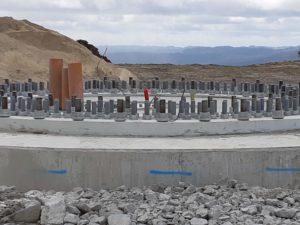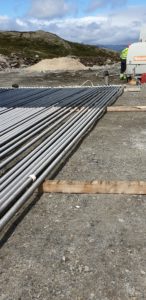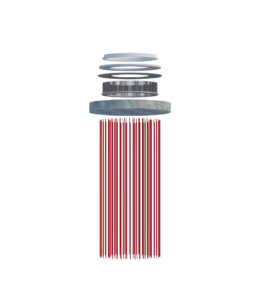 Elige una oficina
Elige una oficina



The rock anchor is a complex but efficient foundation solution. It reduces the volume of concrete and steel tonnage by using rock as the principal foundation. The rock anchor is highly cost efficient, feasible and has proven to be very reliable in many projects.
This solution uses the rock masses as a WTG foundation. Basically, the tower rests on the top of a small reinforced concrete block.
Two approaches are available:
The anchors counteract uplift forces acting on foundations and post-tension the concrete structures against the rock. The anchors are often about several meters long.
Wind park owner are able to take advantage of the earth crust instead of building a gravity foundation for their wind turbines. The costs for the reinforced concrete and the construction work can be saved.
Soil anchors and rock anchors provide a high load capacity and the bond length can simply be increased to accommodate the required load. Anchors do not involve large excavation areas as required by alternative methods and are a particularly attractive option when space is limited and when low impact or the environment is a priority.
This solution is specially challenging as the engineers have to adapt the foundation, with an interface, between the towers and the rock anchors. Not to forget the special design work of these anchors that needs to be done.

Rock anchors are made of high tensile steel, and typically they are anchored in sound bedrock by means of high strength grouting. Ducts are placed in the concrete and holes will be drilled into the rock for post-tensioning application.
The anchors may be bolts or cables. For most applications the rock anchors are tensioned to a force higher than what is necessary to resist the foundation uplift force. They are eventually grouted on a part of their length to allow for a certain free tensioning length.
Please contact us if you are interested in knowing more about CTE Wind’s rock-anchor solution